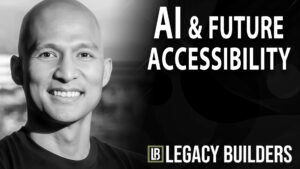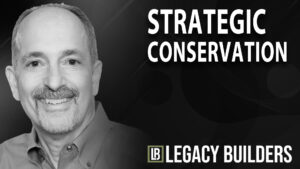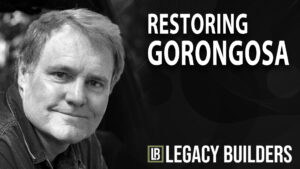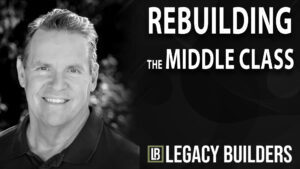Personal Finance 101

Personal Finance 101
The subject of personal finance is very broad, but as a beginning, I would like to discuss what I consider the foundations of personal finance: Security, Stability, Growth and Protection & Management.
Security
Security to me means that I am prepared for the “hit by a bus” scenario.
I have life insurance to provide for my wife and children. Health, disability, auto and home insurance policies also provide me additional protection in their respective areas. I also have a list of where these policies are, who my agents are, phone numbers and basic policy information (#s, amounts, costs, etc.) I keep this information both in a file at my house and in a safety deposit box at the bank (a friends home will also work – think: “house burns down” scenario). Also my wife and my brother and sister-in-law who live nearby also know where these things are.
I also try to maintain an emergency fund of cash in a bank account or money market account (with checks) so that I am prepared for a financial disaster, layoff, or natural disaster. It took several years to build up this cash fund. I started with a goal to have enough cash for 6 months of my normal financial needs (mortgage, food, insurance, transportation, etc.). Now I am trying for 12 months’ worth. I do this by saving a little each month, and “investing” a portion of all “found” money (gifts, inheritances, tax returns, anything unexpected).
I have a will and update it each year around New Year’s to reflect any changes in my life during the past year (new children, new home or business, etc.). Most people don’t need an extensive will, the forms you buy at your office supply store will do. But in some states if you die without one, watch out. What happens to your money and even your children could be entirely up to some state or court appointed official.
Stability
The next level of personal finance is stability.
Stability to me means that first of all I live within my means. I don’t spend more than I earn. Otherwise I am spending my savings, investments, emergency money, or getting into debt. I have a lot of debt, but most of it is real estate which is producing some income. I try to avoid credit card debt and purchase everything with money I already have. I don’t buy things expecting that next month I will have more money or I will get a big raise or promotion. You can’t sell me a car based on a monthly payment amount; I want to know the final price!
In order to make sure that I am living within my means, I created a simple budget and I track my expenses using Simple Joe’s Expense Tracker. I can tell how much I have spent in each budget category and I know when to keep a closer eye on certain types of expenses, or when and where I can cut expenses and what I can live without in order to stay within my budget. Counting pennies is pretty tedious, but tracking where the dollars go can be eye-opening.
Another aspect of stability is avoiding or eliminating debt. Debt in itself is a form of stability; you always have to make those payments until it is all paid off.
Some recent reports show that the average American is $7,000 – $20,000 in debt. Most of it is consumer debt: credit cards, store accounts, rent-to-own, auto loans, etc. And those types of consumer debt usually charge a higher interest rate than any savings account, CD, or money market account; even more than most high-flying risky investments.
This means that $1,000 in debt at 18% is costing you 9 times what your $1,000 savings account at 2% is producing. Consumer debt is a dangerous spiral that is very hard to get out of.
The first problem is, as mentioned before, living within your means. Don’t get further into debt to support an extravagant lifestyle. Or even if you are frugal, if you are using credit cards and debt to finance your purchases, you either need to stop purchasing luxury items or find a way to increase your income to support these purchases/payments.
You may even have to lower your standard-of-living because you have racked up considerable debt and need to free up some money to pay it down. But don’t wait to start. Those minimum payments are often designed to keep you paying 18% interest for 40 years! That’s longer than most home loans. You could even end up paying more than 10 times the original cost of the item just in interest payments. Is that new stereo really worth that much?
To help people get themselves out of debt we created the “Pay Off My Debts” tool in Simple Joe’s Money Tools. It is also available as a stand-alone product called Simple Joe’s Debt Eraser. These tools help you create a Rapid Debt Reduction Plan which shows you how much to pay on each debt each month in order to save as much on interest charges as possible and pay off your debts as soon as possible.
These tools can help you systematically eliminate your debts whether you owe $1,000 or $100,000. The key is to start living below your means and start focusing on paying off your debt.
It doesn’t make much sense to be worried about whether or not your 401k earns 8 or 9% this year, if you are paying 21% on your credit card debt.
A third aspect that starts in the stability category and transcends to the next personal finance level, growth, is the concept of investing in yourself. By this I mean spending time to educate yourself in personal finance matters, as you are doing right now and spending time gaining more knowledge and improving your skills or even developing new ones.
As an employee, this can have a direct relation to who gets laid off during the next round of cutbacks. If you have some skills or have demonstrated some abilities that are not possessed by your co-workers and these skills make you a more valuable employee, you are less likely to get the pink-slip.
Also while you are making yourself more valuable to your current employer, you are also making yourself worth more to future employers. It is much easier to land a job if you have some special skills that are in high demand or even if you bring some special knowledge or experience that you fellow job-seekers may have overlooked or failed to invest in.
Being in the computer industry, I have to spend hours each week reading trade magazines, exploring web sites, and reading emailed newsletters to keep abreast of what is new in my field. If I stopped learning just five years ago, I would have missed out on the Internet revolution, email, web sites and the majority of the income I now enjoy.
Keeping myself informed and up to date takes time and resources, but it helps me protect my current income and expand my skills to help me earn income in other areas. This increases my stability by allowing me to not have to rely on one client, employer or source of income. A chair with four legs will always be more stable than a stool with only three.
Growth
The next level of personal finance, as I alluded to before, is growth.
Once you are secure and stable, you can begin to think about building your wealth. Not that you have to figure out how to become the next Bill Gates or Warren Buffet. But you have to start building the “nest-egg” that you will rely on when you retire.
And don’t think that Social Security has you covered, or that your 401k will grow back to what it was a couple years ago. Or that your current employer is going to re-institute the generous pension plans of yesteryear. 401ks are much cheaper to administer and you, the employee, take the hit when the market goes down, not the employer.
My father is nearing retirement age and I think he has a good plan. He has done some research and estimated what his expenses are going to be when he is retired. He then took a look at his potential sources of income during his retirement.
He figured that Social Security would cover about a third of what he wanted to live on. Only a third! And he has worked his entire life. Would you like to instantly have to live on only one third of what you currently make? Retirement is suppose to be the golden years, so where’s the gold?
Luckily throughout his career, my father has worked for companies that have had pension plans and he had worked long enough at each company to be eligible for some pension money. This is rare these days because today the average worker will change jobs and companies at least five times during his/her career. Also, as I mentioned before, companies are switching to lower cost 401k plans that do not guarantee you any fixed payments.
In my father’s situation, his pension money would cover another third of the retirement income he wanted. So now he had to either figure out where the last third was going to come from, or start cutting out expenses during retirement, like not visiting his children so much. None of us liked the sound of that.
So my father started learning about the stock market and investing in stocks and mutual funds. He made a plan for growing his wealth and then educated himself as to how he could accomplish his plan. I wish I could say that he is doing better than he is, but luckily he has some time still to put his plan into action and ride out any market downturns. (He can do this because he has the security of insurance and emergency money, and the stability of little debt and a strong set of skills.)
By learning about how stocks, bonds, mutual funds, index funds, options, futures, commodities, real estate and other financial tools work you lay the foundation for growing your wealth. You may start with just $100 in a bank CD, but as you learn more and become more sophisticated, you can invest in more and more opportunities.
You will learn about how risk and reward are related, that as the risk increases so does the size of the potential reward. Just like at the race track, you’ll make more on the long shot, but the odds are against it. Also you can learn how to tilt the odds in your favor and protect yourself against risk.
For those who are just starting out in the growth phase or who want to dabble a bit before completing the other levels of personal finance, my suggestion would be to look into index mutual funds. Especially no-load index funds (no initial/sales fee).
These funds are made up of the same stocks that make up the popular market indexes like the Dow Jones, S&P and NASDAQ100. The costs are low because management is simple and as a mutual fund you can invest a little at a time. Also they are easy to follow since you see them on all the news shows and in the newspaper.
Protection and Management
The final level of personal finance is the protection and management of your wealth. Most people never develop wealth enough to need this level. But some of the concepts can be applied to any amount of wealth you possess, $10,000 to $10,000,000.
Part of the protection harks back to your will as we discussed on the first personal finance level: security.
With any significant wealth or valuable asset (your home, car, heirlooms, 401k, IRA, business, etc.) you will want some way of disposing of that asset upon your death. Whether it is go to go your family, favorite charity, or local church, if no one knows about it, “it ain’t gonna happen”.
As you start to accumulate wealth in excess of $350,000, you may want to consult an attorney about creating a trust. A trust is an entity that can own property and pass that property to anyone you name in your will. Usually the trust is designed to provide income to children from the assets that are placed in the trust.
The trust can survive you so that your assets and income may be passed on to your children or next-of-kin without excessive taxation and legal entanglements. Some states will take up to 55% of your assets as taxes when you pass away.
Protection also relates back to insurance. Now it may be time to look at a multi-million dollar umbrella policy that will protect you from lawsuits designed to part you and your wealth. You may now be a bigger target, so purchase a suit of armor.
The management aspect comes into play where you may start to concern yourself with taxation, ownership, distribution of income and possibly endowments to charities or other non-profit institutions.
You may hire a person or company to manage your wealth, or you may choose to do it yourself. Most people who have earned their wealth through the “sweat of their brow” have already become adept at managing their assets. Some continue to personally manage their wealth because of the enjoyment or challenge it gives them.
Others are ready to turn it over to a trustworthy manager (who only gets paid a percentage of your increase) and travel the world, or sit on a beach and count the waves.
Whatever your dreams for retirement (and why wait until you are 65), understanding the different levels of personal finance and spending the time and resources to educate yourself will pay off whether you live next to Bill Gates or Homer Simpson.
© Simple Joe, Inc. David Berky is president of Simple Joe, Inc. a marketing company that sells simple software under the brand name of Simple Joe.
We hope you found this article about “Personal Finance 101” helpful. If you have questions or need expert tax or family office advice that’s refreshingly objective (we never sell investments), please contact us or visit our Family office page or our website at www.GROCO.com. Unfortunately, we no longer give advice to other tax professionals gratis.
To receive our free newsletter, contact us here.
Subscribe our YouTube Channel for more updates.

Alan Olsen, is the Host of the American Dreams Show and the Managing Partner of GROCO.com. GROCO is a premier family office and tax advisory firm located in the San Francisco Bay area serving clients all over the world.
Alan L. Olsen, CPA, Wikipedia Bio

GROCO.com is a proud sponsor of The American Dreams Show.

The American Dreams show was the brainchild of Alan Olsen, CPA, MBA. It was originally created to fill a specific need; often inexperienced entrepreneurs lacked basic information about raising capital and how to successfully start a business.
Alan sincerely wanted to respond to the many requests from aspiring entrepreneurs asking for the information and introductions they needed. But he had to find a way to help in which his venture capital clients and friends would not mind.
The American Dreams show became the solution, first as a radio show and now with YouTube videos as well. Always respectful of interview guest’s time, he’s able to give access to individuals information and inspiration previously inaccessible to the first-time entrepreneurs who need it most.
They can listen to venture capitalists and successful business people explain first-hand, how they got to where they are, how to start a company, how to overcome challenges, how they see the future evolving, opportunities, work-life balance and so much more..
American Dreams discusses many topics from some of the world’s most successful individuals about their secrets to life’s success. Topics from guest have included:
Creating purpose in life / Building a foundation for their life / Solving problems / Finding fulfillment through philanthropy and service / Becoming self-reliant / Enhancing effective leadership / Balancing family and work…

MyPaths.com (Also sponsored by GROCO) provides free access to content and world-class entrepreneurs, influencers and thought leaders’ personal success stories. To help you find your path in life to true, sustainable success & happiness. It’s mission statement:
In an increasingly complex and difficult world, we hope to help you find your personal path in life and build a strong foundation by learning how others found success and happiness. True and sustainable success and happiness are different for each one of us but possible, often despite significant challenges.
Our mission at MyPaths.com is to provide resources and firsthand accounts of how others found their paths in life, so you can do the same.
The AI Revolution: Avoiding a Future Controlled by the Few
Artificial Intelligence (AI) is at an inflection point. While most discussions center around the potential and risks of AI, Aldo Carrascoso, CEO and Co-Founder of Vivum AI, offers a different perspective—AI is at its own “War of Currents” moment, much like the battle between AC and DC electricity in the early 20th century. In a…
Partnerships for Strategic Conservation – Barry Gold
Barry Gold Outlines a Bold Vision for Conservation and Sustainable Development Africa is on the brink of a transformation—one that will define the future of the continent and, ultimately, the planet. With its population projected to double from 1.3 billion today to 2.2 billion by 2050 and reach nearly 4 billion by 2100, the demand…
Restoring Gorongosa National Park
Greg Carr’s Mission to Restore Gorongosa National Park: A Story of Conservation and Community Greg Carr’s journey from a successful technology entrepreneur to a dedicated philanthropist restoring Mozambique’s Gorongosa National Park is nothing short of remarkable. What began as a search for a meaningful way to give back has evolved into one of the most…
The Ownership Revolution: How ESOPs Can Strengthen the Middle Class
The Ownership Revolution: How ESOPs Can Strengthen the Middle Class For decades, the American middle class has been the foundation of economic stability, embodying the aspirations of millions. Yet, as Chester Woolley eloquently highlighted in his recent speech, this once-thriving segment of society is in decline. “The middle class seems to be shrinking. It doesn’t…




